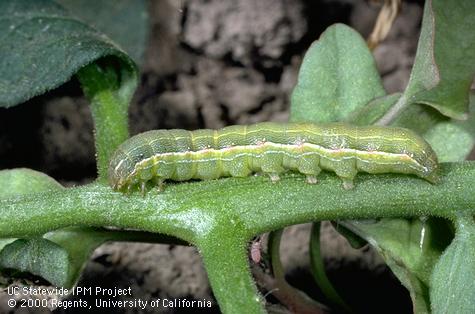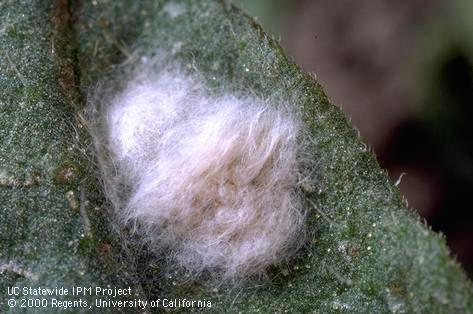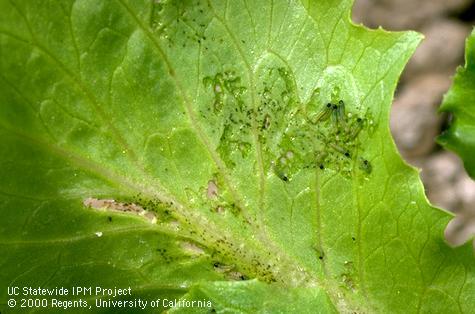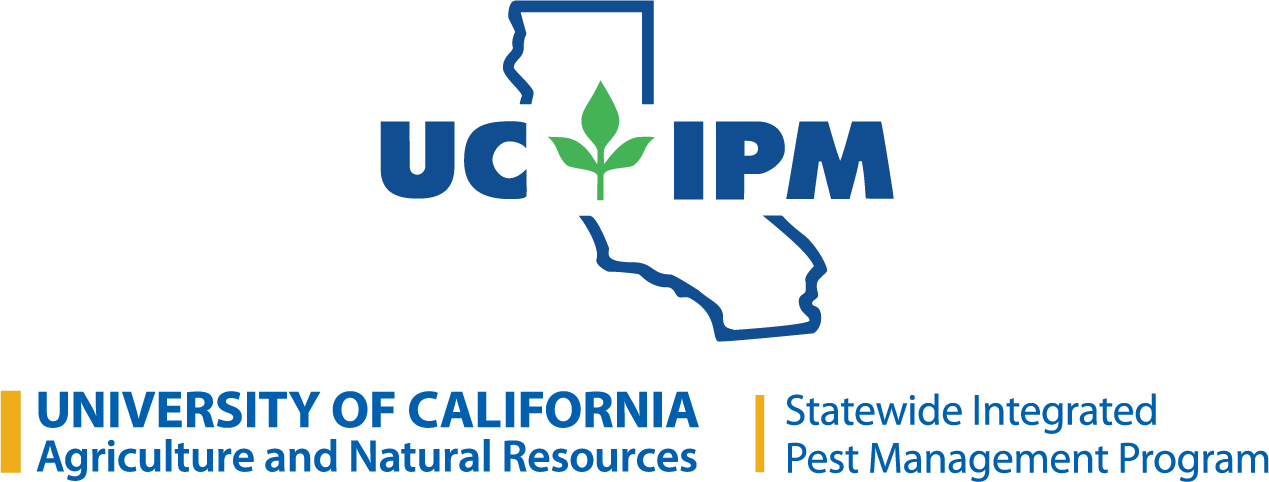Identification
Armyworm larvae feed in groups, which distinguishes them from other vegetable pests such as corn earworms and loopers. Markings on newly hatched armyworms are usually hard to distinguish from those of other caterpillars; older larvae have distinct lengthwise stripes. The surface of the armyworm skin is smooth. View armyworm species and look-alike caterpillars.

Life Cycle
Armyworm eggs are laid in fluffy masses on the crowns of seedlings and leaves of older plants. Newly hatched larvae feed together near the egg cluster and gradually disperse as they grow. Older larvae chew irregular pieces from leaves and feed on green fruit. Larvae usually do not feed on fruit until the third or fourth instar, but in later generations, they may enter fruit soon after hatching. Armyworms pupate in a cell on or just below the soil surface. The adult is a gray and brown mottled moth. The life cycle takes about a month in warm weather and there are about three to five generations per year.

Damage
Armyworms may feed on the crowns of seedlings. On larger plants, armyworm caterpillars skeletonize leaves. In tomatoes, strawberries, and cucurbits they make shallow (occasionally deeper) gouges in fruit.

Solutions
Handpick. Virus diseases, parasites (Hyposoter and Trichogramma), and general predators may be effective on caterpillars. Eggs are protected from parasites by fluff. Bacillus thuringiensis or other insecticides such as spinosad may be used against young caterpillars but are needed only when numbers are high on seedlings. Ignore armyworms in sweet corn, where they do not usually cause major damage.
